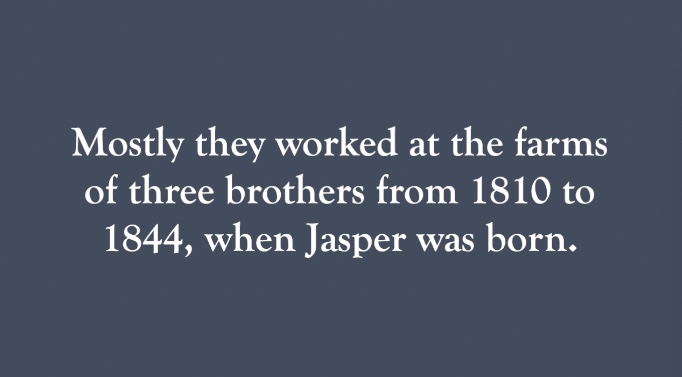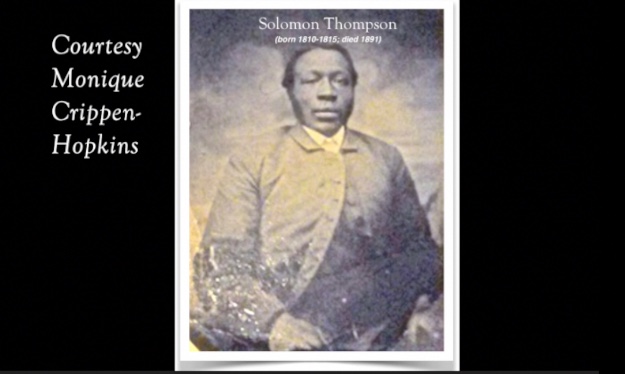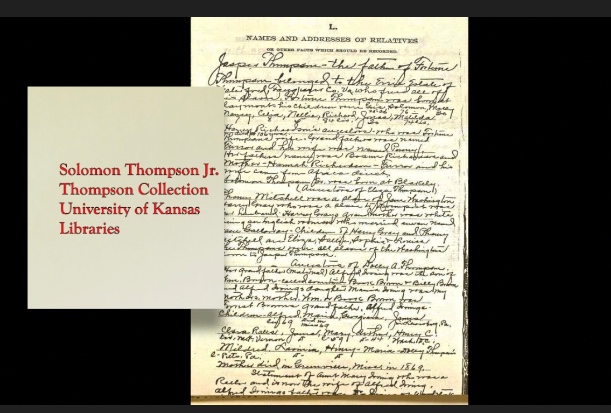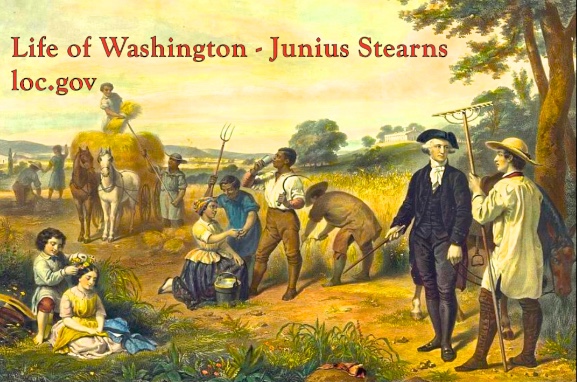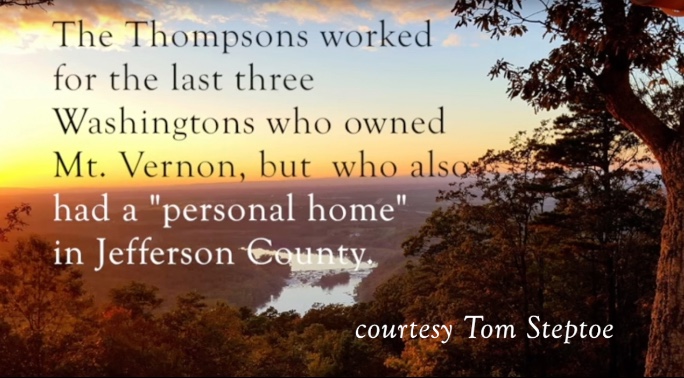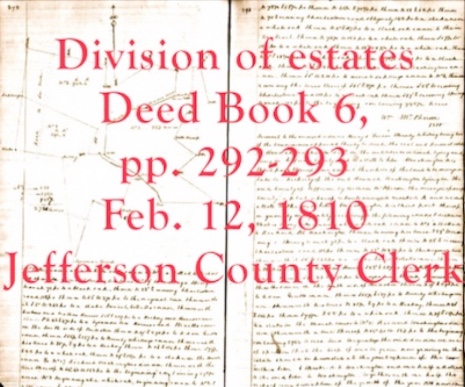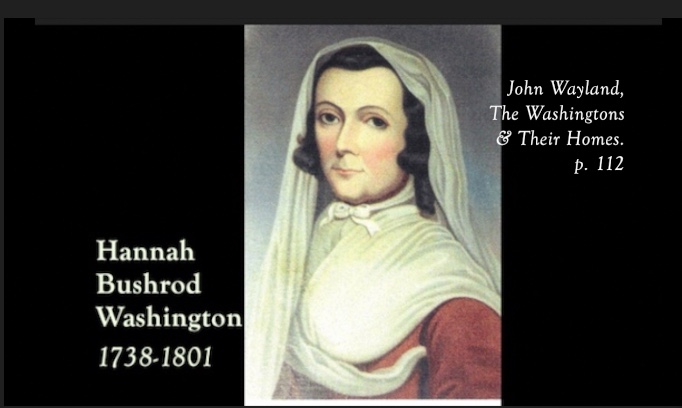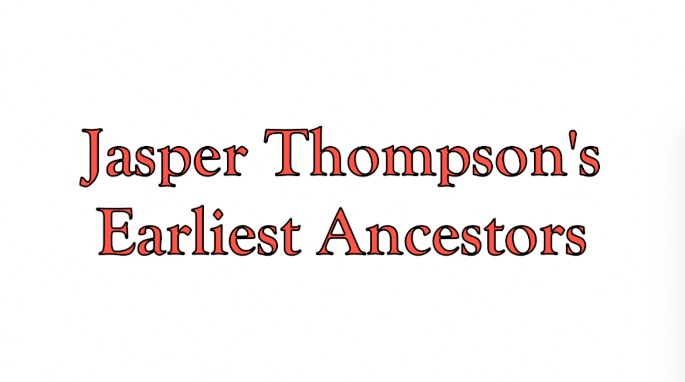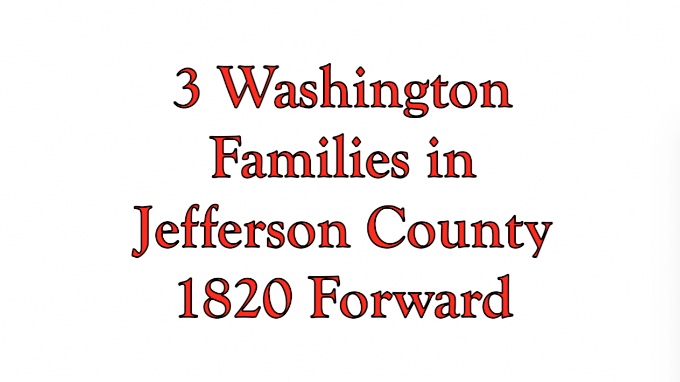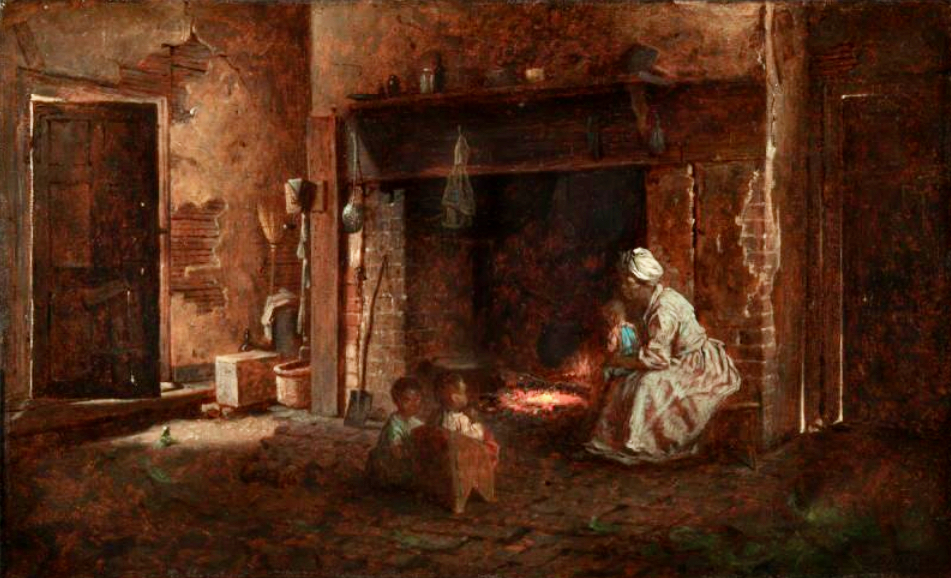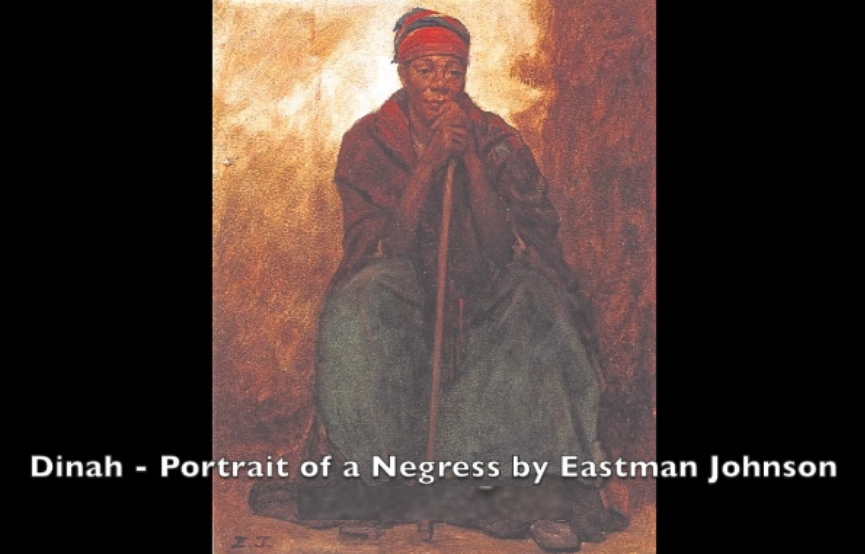14,117 words
https://web.archive.org/web/20190710014531/https://civilwarscholars.com/2014/12/thy-will-27-war-ends-george-slow-dudley-pendleton-homebound/
Made possible with the generous, community-minded support from American Public University System.
Chapterette 27 – April, 1865 – THE WAR ENDS. Dudley Pendleton Returns Home with a Servant; George Slow Finds a New Life in Philadelphia.
Sometime Congressmen to the Confederacy Alexander Boteler struggles for physical and spiritual footing while Richmond, the seat of Southern power, crumbles in to chaos and ruin all around him. He writes Helen, his wife, following the third battle of Petersburg, Va in April, 1865: (1).
Richmond, April 25, 1865 Tuesday
My own dearest wife:
I have written to you through Gettie (Angelica Peale Boteler), Pris (Priscilla Boteler, or Mrs. Henry Boteler, his other sister) and Charlie (Charles Peale Boteler) since I arrived here but as there is great uncertainty in the mails, I fear my letters may not have reached you. I write this hoping to have a chance to send it by some private opportunity across the country.
Taking it for granted, therefore, that my previous notes have failed to reach you, I’ll give you a brief resume in this of the circumstances attending my capture. On that terrible 2nd of April, my furlough expired and I left this city for Petersburg little thinking of the scenes I should see on my arrival there. When I got to P. the battle was raging all around the city which was on fire in several places. Our Quarters were abandoned and our Court with my baggage gone, I knew not whither. The enemy were within half a mile of the town, the day was intensely hot, I quite unwell and the confusion utterly indescribable. Well, here was a fix! To make my story short I stayed in P. till night, then having seen that all hope was lost, I crossed on the only remaining pontoon bridge and walked out to Dunlop’s three miles, to take the cars for Richmond which I did with 500 wounded in a freight train arriving in Richmond an hour after midnight. I had no idea that Richmond was also to be evacuated. Of course I was horrified when I got here to find if possible worse confusion and panic. The pickets around the city had been withdrawn. The yankees were looked for before morning, and the firing of warehouses had begin. I hurried to Ewell’s Hd Qtrs and saw the mobs gathering in the streets.
Well, here was another and a worse fix! Men think rapidly and decide promptly when they have their wits about them, and I rarely lose mine, so I footed off to my unfailing friend, Mr. Lersner, roused him up and told him the situation. He had a fine full-blooded mare. I told him I must have her, for my liberty if not my life depended upon it, and he proved himself to be a friend in need. After a hasty lunch and a glass of “viskey vater paff”, I mounted my mare and then felt ready for anything. What a difference it does make in a man’s feeling to have a fine horse under him on an occasion of this sort. Well might Richard III have offered his kingdom for a horse when his Richmond was in the field.
As I rode down main street it was three o’clock and I was involved in a mob there and on Cary street. After much difficulty and no small amount of danger, I got across on Mayo’s bridge to the southside of James River, and then before I struck off in the dark up the Manchester pike to intercept our army towards Farmville, I stopped on the hill to make my farewell look at the doomed city. The roar of drunken mobs, the clatter of cavalry and rattle of wagons, artillery, etc. hurrying off rose audibly above the noise of the falls. How little I thought even then that all that part of the town I had just traversed, including the bridges I had crossed and the others also, would be utterly destroyed in a few hours.
I pushed on alone in the dark, and by daylight had gotten some miles away. I then began to overhaul organizations and selecting my company, attached myself to a pleasant party of friends. The next day I came up with the army, having ridden all night, and here my real troubles began! Such a time as we had of it, such confusion, such privation and fatigue! On the second day the enemy’s cavalry overhauled us and began their attacks. It was my luck always to be just where the enemy chose to pitch into us, and I had the worry of being in four of the worst stampedes I ever saw and to lose everything I had but the clothes on my back, including my English saddle, cloak, and (I shall never cease regretting it) my cherished field glasses that I valued so highly and which the children saved for me last summer when our home was burned. My experience in Lee’s retreat to Appomattox, C. H. furnished incidents enough to fill a volume, and I must defer the details until I see you. On the 9th inst., as you know, we surrendered and were paroled on honorable terms by Genl. Grant, who did more by his magnanimity to conquer us than all his fighting has accomplished.
So on the Sunday or our surrender I was a prisoner of war, without a change of clothes, or blanket or morsel to eat, sick, suffering with three horrible boils (carbuncles), without shelter in the woods and the rain coming in torrents, and a cold rain at that. Is it not a wonder that I didn’t die, considering that I’m naturally delicate and will be in less than a month fifty years of age? By the way how old are you! When I last saw you last summer, you seemed to be about 25, but I can’t see more than half as well as other folks. After starving for a couple of days in the yankee lines I was lifted into an army wagon (without springs) and jolted down here over about 130 miles of rough country roads with little or nothing to eat in the way, suffering agony every inch of the journey, and the pains of death at every jolt. Whew! But it hurts me to think of it, and I’ll never forget my jaunt from Appomattox to Richmond. When I got here, to L’s. house of course, I was put to bed, a physician sent for and properly cared for. Now I’m well again with the exception of the natural weakness arising from my illness. By the terms of our surrender we are allowed to go home and to remain there “undisturbed,” and I would have been home by this time via Baltimore, if it had not been for the unfortunate and infamous assassination of Lincoln, which threw the North into a state of angry excitement and made it dangerous for paroled prisoners to go there, so that we are for the present detained here, no permits being allowed to Washington or Baltimore. They tell me I can go overland home, and I will go that way if not allowed to go by water to Baltimore as soon as the railroad is finished to Gordonsville through Culpepper, Loudoun or by way of Luray, New Market, and Winchester. I’ll get home somehow, if I have to foot it, in time to celebrate my 50th birthday with you all.
I have not heard from Alex (Alexander Boteler, Jr. in the Rockbridge Artillery, who met and married in Lynchburg.-JS)) since our surrender, there being no communication with Lynchburg. I learned that he was in Lynchburg when we were captured and that he left there with a number of others to go to Joe Johnston in North Carolina. If not captured before he got there he will be (or perhaps by this time has been) surrendered with the rest of Johnston’s army. For I suppose you are aware that we can no longer keep a force in the field this side of the Mississippi and that the cause of the South is utterly lost. The collapse has been a sudden one, and it is as complete as the worst enemies of the Confederacy could desire.
The government is trying to get across the Mississippi and great fears are felt lest Mr. Davis and Breckinridge shall be captured. I have decided upon my course. I need rest and yearn for peace. I did all I could to prevent this war and to preserve the Union and Constitution as our forefathers made them. I have been faithful to the trust reposed in me, both in the U.S. and Confederate Congresses, and I regard it to be the duty now of all good citizens to make the best of circumstances and bow to the manifest decree of Providence to do what he can to soften the asperities and heal the wounds of civil war by restoring order and good feeling.
We must acquiesce in the present status and return in good faith to our former positions in the Union (so far as our altered situation allows). This is the part of wisdom, good sense, and patriotism. Blood enough has been shed. We have written our protests in blood and can do nothing more but to submit. More of this, however, when we meet. I now go down to the post office to see if I can get a letter from Baltimore, as there is a mail in. I am very happy, darling wife, to hear of you, for I’ve just gotten Gettie’s letter, telling me you are in Baltimore. That intelligence makes me more anxious than ever to get off from here and I’m like a caged wild beast. Today I made a strong appeal to Gen. Ord and Gen. Patrick to let me go, but they are immovable and cannot tell when this confounded restriction upon us will be removed. It may exist for a fortnight yet, and every day now that keeps me from you is an age.
My friend L. took a package of letters from my trunk after I left here, and going to N. York took them with him to hand over to some of my family for safe keeping. He didn’t stop in Baltimore on his return, but in Washington, and thence forwarded them by Express to Mr. D., finding his address, “Commercial Building,” in the directory. Did Mr. D. get the package? If so, take care of them, as they are interesting letters from Lee, Jackson, Stuart. Benny Andrews is here safe and well. I have no doubt but that Alex is paroled and at Lynchburg. Perhaps communication is open from Baltimore to L. and you can hear of him by writing to his wife. I am doing well, kindly cared for, all my necessities supplied. But I cannot be happy held in duress from you. True it might be worse. I might have been captured, as 2,000 of our poor fellows are now in Libby Castle Thunder, on bread and water. I am a prisoner of war, it’s true, but have liberty to go about the city and the pledge of Gen. Grant’s honor to go home and “remain there till properly exchanged,” which will be never, as we never can have an equivalent of prisoners to exchange for Lee’s army. Many old political friends are calling on me and all (friends and foes) now say I was right to resist secession as long as i did and to stand by the State afterwards.
I have been true to Virginia and am now laboring to have Virginia true to herself by acquiescing in the necessities of the hour. Today I have had conferences with Johnson, Barbour, A. Marshall, Alex Rives, Duff Green and others about the affairs of our State. There never was a time when our dear old commonwealth more needed the wisdom and devotion of her sons. Tell Charlie to cast his eyes about for capitalists to buy the Mill. It should be held by a joint stock company. L. thinks men can be found in N.Y. to take hold of it and I want him to aid me in finding them. Give my love to my darling children. Kiss dear little Eddie for his Grandpapa. Tell Gettie to read this letter as an answer to hers and to accept my heartfelt thanks for her welcome note.
The illustrated papers don’t exaggerate in their pictures the devastation of Richmond. I can hardly recognize the streets where I was familiar with every house. I’m utterly lost and bewildered in the midst of ruins which extend as far as the eye can reach.
It’s all like a horrible dream to me. I can give you no idea of the last three weeks. Love to all around you. I’ll daily to some of you. Let me hear from you, addressing your letters to L.’s care. God bless you, my own sweet wife. Your devoted Husband – (2).
GEORGE SLOW AND THE “SERVANT” OF WESTWOOD
When Dudley returned home to his family farm in Jefferson County at Westwood and to Tippie in Shepherdstown he was accompanied by a “servant,” a freed African- American man who had been with him throughout the war, just as George Slow, another Westwood African-American man accompanied and assisted the officer from Pennsylvania named Frank Donaldson, beginning in March, 1862 for the duration of the war. Both African-American men were at Westwood when Dudley’s father, Hugh Pendleton, freed them in March, 1862 as Federal General Nathaniel Banks and his army entered the County. Some returned and were helping run Westwood after the war with son Dudley.
The Pendleton household at Westwood after the war shows several members of the Slow family still there. The literate, 37-year old male named “Hugh T. Slow” could perhaps be the “servant” with Dudley Digges Pendleton during the war and perhaps helped Dudley in his considerable work at Westwood, as described in Pendleton’s letters to Tippie in the late 1860s. – (3).
Chapter 28 – After The War and Tender Sprouts Appear, New Lives Unfold; Memories Blow Like a Breeze – Always.
Jordan Norris the African-American sexton of the Trinity Church worked for the Shepherd family before the war and was known for his fine presentation. The very day war ended, he was roused from sleep in his night shirt, taken toTrinity Church and ordered by Federal soldiers to ring the church bell proclaiming the war’s end and victory for the Federal army – and locking him inside. – (4).
Henry Kyd Douglas Finds His Glory.
One of the terms of surrender was the prohibition of Confederate officers to wear their uniforms. Yet, Henry Kyd Douglas characteristically returned to Shepherdstown in uniform. He arranged immediately upon his return to have his studio photo taken, in fact, by a Mr. Darnell, with his friend, Florence Hamtramck, also posed with him in a somewhat adoring posture. This cost Douglas yet another stay in a Federal prison from May through August, 1865. – (5).
After the war he was an ever-present personage at reunions, met the aging former Federal general George McClellan when the retired General came to Antietam. Douglas tried his hand with limited success at law in Maryland, and as told Mr. Surkamp by the late Henry Shepherd, Douglas liked to defy the strong animal odors aswirl about German Street by keeping a rose in his clenched teeth as he sauntered on through. He never married. If the statements of respected retired Confederate Gen. Tom Rosser to an audience on May 10, 1897 in Raleigh, North Carolina were to be accepted on their face, then Douglas would be on the short list of candidates for having lost the Special Order 191 of Lee’s Maryland Campaign in 1862, an altogether unknowable fact. Just the same, Douglas’ unquenchable flair for self-drama, in the end, served him well in writing his book “I Rode With Stonewall,” one of the few still-in-print, personal memoirs from the Civil War with an enforceable copyright in 2015 and that is regularly sold in book stores. – (6).
The Lees in Shepherdstown:
The Lee’s rebuilt a home on the west end of town using foundation stone from Bedford and with monetary support from the Lee relative who served in the Federal Navy, Admiral Samuel Phillips Lee. This Lee, when asked about his loyalty, replied “When I find the word Virginia in my commission I will join the Confederacy.” – (7).
November 5, 1865 – 22-year-old Netta would marry Charles Goldsborough, said to be the first marriage conducted at Trinity Episcopal Church. Recorded by George Byers, a Unionist in town during the war. – (8).
Henrietta Bedinger Lee Makes Her Traditional Year-End Entry in Her Diary for 1865.
December 31, 1865
I thank God for the mercies of this year. That the horror of wars have ceased that I have met again those friends from whom the war had separated me – and for the safe and pleasant journeys I have made and I pray, that He will sanctify for me the afflictions of the year – that are the deepest I can ever know. Since the first day of the year . . .and my sister Louisa was taken to her rest in Paradise. God grant the separation may not be a long one!! – (9).
Henrietta’s eldest son, Edwin, spent the balance of the war years in Canada overseeing Confederate Secret Service operations. He came home his health failing. His wife, Susan Pendleton Lee, traveled to warmer climes with him. He remembered in poems. He remembered the sight of the Manassas/Bull Run field and his time with dying Willie Lee, the fanciful innocent day when he was the Knight of Alhambra in the harmless ring tournament; then, in 1863, having to write an obituary for beloved George Bedinger, whose body was obliterated before the mouth of a cannon.
Wiser, he wrote:
Once they sprang to Battle’s call
As to a revel’s sound.
Then War-kings! Now – ah! this is all,
A nameless, storm-washed mound.
Edwin died in his sleep Wednesday, August 24, 1869. – (10).
Within a year of Edwin’s, Julia Pendleton Allen, the widow to James W. Allen, also died, leaving behind a young son. The wages of war had gathered upon her. – (11).
Autumn, 1867 – John Esten Cooke re-visits The Bower once more and sees fonder, former scenes.
In the autumn of 1867, I revisited the old hall where those summer days of 1863 had passed in mirth and enjoyment; and then I wandered away to the grassy knoll where ‘Stuart’s oak’ still stands. The sight of the great tree brought back a whole world of memories.
Seated on one of its huge roots, beneath the dome of foliage just touched by the finger of autumn, I seemed to see all the past rise up again and move before me, with its gallant figures, its bright scenes, and brighter eyes.
Alas! those days were dust, and Stuart sang and laughed no more. The grass was green again, and the birds were singing; but no martial forms moved there, no battle-flag rippled, no voice was heard. Stuart was dead; — his sword rusting under the dry leaves of Hollywood, and his battle-flag was furled forever.
That hour under the old oak, in the autumn of 1867, was one of the saddest that I have ever spent. The hall was there as before; the clouds floated, the stream murmured, the wind sighed in the great tree, as when Stuart’s tent shone under it. But the splendor had vanished, the laughter was hushed — it was a company of ghosts that gathered around me, and their faint voices sounded from another world! – (12).
The Dandridge sons returned home and helped out at the farm.
Formerly born, raised and enslaved at The Bower, John Fox and other family members lived in their own home adjacent to The Bower and offered their labor for hire.
John Fox had been a teamster with the Confederate Army, probably Grahem’s Artillery with Lemuel Pendleton Dandridge. They both returned to The Bower where the Dandridges’ once owned John and his three siblings, Mary, Humphrey and Benjamin. When very young and motherless (“Mary” their mother was forcibly taken away in the 1850s, according to the Fox family oral tradition because she refused to be a “brood” or frequent child-bearing woman). Owner Adam Stephen Dandridge had these four “little foxes” raised in and near the main house. The children were assumed to taste milk from the same bowl of the house pets at the mistress’ instruction, but, that aside, they ever since rejoiced at learning how to read and write – a benefaction that came with doing work around the home with its books and the practical need for them to read. Each would prosper in life.
John Fox would, after a few years working The Bower, become a neighboring property-owner and was employed by Lemuel Dandridge running their timber milling operation on the Opequon. Fox would own three farms at the time he died May 19, 1911 in Kearneysville, WV. – (13).
Sallie Dandridge, the Dandridge’s eldest daughter who had a romance with one of J.E.B. Stuart’s artillerymen in the fall of 1862, would marry another after his wartime death and would die young in 1879.
Lastly The Bower dream would settle back to earth, indistinguishable from decaying leaves, then etherealize into Memory.
1865-1868:
Dudley Pendleton Works Westwood, The Family Farm, With Paid Labor, & Writing At Night Love-Filled Letters To Tippie at the Boteler Home in Shepherdstown, 20 Miles North.
His aging father, Hugh Nelson Pendleton needed his help. At that time, two elderly African-American women refused to leave and stayed at Westwood until they died. Their Philadelphia relatives, however, visited them and other friends in the Valley and when Hugh N. Pendleton’s first grand child, Helen, was born on April 2, 1867, they sent the baby a lace handkerchief. – (14).
During the war, one of these freed servants from Westwood made his way to Massachusetts and to Lydia Maria Child, a noted New England writer and abolitionist. Ms. Child wrote to Hugh Pendleton that his former slave was ill with consumption and asked for money to help him. Mr. Pendleton wrote back that he had no money to send but if the man was sent “home” he would receive every care and attention. But it didn’t happen. – (15).
Home November 24, 1865
Friday night My darling,
I felt almost as if you were cruel in asking me not to go further than H.Ferry, so hard was it to leave you, yet I know you were right & on getting home & finding my father so unwell. I felt that glad as I would have been to be with you longer twas right for me to return. He is better than he was but still suffers greatly with severe cold. I found it hard to say goodbye putting an end to the pleasure of those days we were together, for tho’ the meaning of that time & its results gives me such happiness, it is very different from being with you from being able to look in your face & touch your hand. If I failed in ploughing as well as usual today you may regard yourself as the innocent cause. I could not help forgetting my work sometimes so busy were my thoughts with you. Each succeeding occasion that requires my parting with you will be harder for me to bear. Tell me did you experience any thing of that sinking of heart when we go to the Ferry and were to part after such a time together that I did? From your eye and manner I thought that you did. Was I right? I hope so, for my happiness now consists as much in the love you have for me as in loving you. I fear Mr. Lee suspected a good deal and if so you were plagued I know which I am sorry for. I wish I could relieve you from these disagreeable things. or, If you find this shockingly written you may set that down too to the effect of ploughing and to a quickening of the blood at my writing to you for the thought of you makes it run faster. I was anxious to get to Winchester before my return, but twill be impossible for me. To do so, as I expect to come up for Lilla on Monday if the weather proves good and tomorrow I must remain here. My visit will be very short. I must return the next day so pray give me as much of your time as you can. What would I give to be able to touch your hand tonight, it seems a long time already since I parted with you. Do not forget the picture for me. It will give me great pleasure while separate from you. My heart beats faster at the thought of seeing you on Monday. I am truly yours, D.D. Pendleton – (16).
Westwood
November 30, 1865
My Darling
What will you think when I tell you that last night I intended writing you but was prevented by weariness? I could not keep my eyes open long enough after all had retired to do so yet in the night I awakened and then I was certainly wide enough awake and had no thought but of you, but my opportunity of writing by the mail I intended was gone. I have no chance of writing except at night unless some accident occurs to keep me from my ordinary outdoor business which generally fills up the entire day.
Lilla’s account that we returned on Tuesday or she would have suffered greatly from Cold. Today she told me that one night at Mr. Rusts’ when we were alone she as usual on the sofa, she was greatly alarmed lest one of us might “say something” while she was falling asleep which that fear partially prevented “not intended for other peoples ears.” She went off just now saying she knew I was desiring it greatly, the presence of a third party being always unavailable. So you see she considers us together in thought tonight. Is she wrong? I hope not? Will you not be good while I am away & try & persuade your sisters and yourself that it will be best to listen to my anguish & desire and fix upon February as the time when you will be to me all you have.
So you may know hereafter that my letters will be written between 9 at night and the next morning. It always adds to the pleasure I feel in getting a letter & know the precise circumstance of the writer when twas written & their form I tell you this. In writing to me do not neglect to tell me every circumstance of your life however trivial it may appear, for if I were with you all these little things that together make up our existence would deeply interest me & bring temporarily apart does not in the least make them the less so. So place your self before me as nearly as possible in thought, word and action in your letters. My mother has already half-fallen in love with your likeness and I think a few more glimpses will suffice to complete the victory. The longer I look at it the more I like it, tho’ certainly it does not flatter you. You were so good to me on Monday and Tuesday, it gives me great pleasure to think of it, if you had not been I would have had a terrible time with your Father & Mother, for tho’ not at all bashful, I dreaded that talk very much; you know conversation however, made it easy. Please send me the words to “What will you do love”? It is constantly before me, so for my own peace, I must have the words correctly. This likeness looks at me almost as kindly & pleasantly as you do. But I wish it were you instead. I can communicate with it but there’s no reply.
Twas well too kind in any letter of mine. So let that rest. I read not long ago – when I was more at leisure – Kitto’s life in which were some lines that he wrote which I instant. like them. So will you.
Mary, one sparkle of thine eyes
I’ll not exchange for all the gems
That shine in kindly diadems.
Or spices of rich Araby.
My heart would count the refined gold
Which eastern kings have left untold
But as a beggars price to buy.
One sparkle of my Mary’s eye.
As Horace says tho’ name being changed the same is said of you. Instead of Mary read your own name. It is as true as it was with poor Kitto. I think you said you did not like the ending of my letter. Tell me what you think of the beginning. Any alteration that you may suggest will be cheerfully made. Tho’ I like well my mode of beginning & would not change it – perhaps you may suggest an improvement, if so it must be a word that means more & where’ll you find it? Tell me how I must end my letters to my mind when I say I am “truly yours,” I say a great deal – indeed I say all. “Yours” in thought, word, and deed. Nobody else has right or title in me in any respect. There! Does it not say enough? Let me hear those intended writings. This so that you would have no difficulty in reading it, lest I forgot care and have been thinking of you. I promised that I give you the months of Dec., January and as much of Feb. or you require. Surely enough for all preparation. Will you also do this? Do not for an instant think that there is any feeling of distrust that ails me of either myself or of you. I hear people say sometimes that such & such couples had best make the thing sure before either party changes their minds. Not so with us. But to look forward to a happiness that there is no physical hindrance to one’s enjoying within 3 months for it is hard. I will however look forward very cheerfully. But Ah! how I wish you may think with me. If this gives you trouble ’twill be disagreeable and I want nothing of it too closely to exercise it. Today I was summoned together with two black hands and told to work a road for two days. Each must go for himself. I can’t send my employee as was the case heretofore. Tomorrow it being very inconvenient I went to see the supervisor & he agreed to let me take a piece of road very near by and work it at my leisure so the greatest difficulty is saved. If I don’t stop soon you will object to the time & place of my writings as well as the manner. Don’t send your own too soon. Remember it and look at our talk to you just now. How will you begin? Let me see very soon. Summit Point is the post office.
God bless you,
My darling Yours truly
D.D. Pendleton
Westwood
December 27, 1865
Darling Helen
I can clearly prove to you how complete has been the surrender of my whole heart to you. For last night tho’ there were 20 pretty & agreeable girls in Berryville arranging for the Tableaux – which I cannot escape – I could not interest myself in the affair while if only You had been there all would have been so different. And not once were you forgotten. In one scene I died gracefully for them with Miss Nannie McConniker holding my hand. She agreed because she (knew) I was an engaged man. I can’t count her as to being confident on that point. Tonight is the main affair. I wish instead of being there I could be quietly with you. Papa says that these young young Ladies will think me very unsociable if I do not join in the effort and to satisfy him I went in. When I took my last letter to the Depot I expected yours but have not quite yet gotten it. Yesterday evening I was away. I hope it is there today & now I have not time to write more than this note. Else Kenneth will not get to the office at all. It is going to rain again very soon and hard too. . . . I dislike sending you such a letter, but still more to send than none. Tell me of your X-mas tree etc. Give my love to all. I cannot tell as to my going to Rockbridge yet.
God bless you my dear one,
Yours truly
Dudley D. Pendleton
– (17).
In 1870, after son Dudley married and moved to his home outside Shepherdstown, seventy-year-old Hugh Pendleton worked the land and kept house with his wife Elizabeth at Westwood with the help of their 29-year-old son, Robert, 19-year-old Kenneth and their daughter, 27-year-old Fanny. In addition to a 67-year-old African-American farm worker, Hugh Slow lived and worked at Westwood with his thirty-year-old wife, Millie and their four young children – Mary, Ellen, Lizzie and Ellen.
Meantime, 39-year-old George C. Slow family lived in Philadelphia with: Charles (70), Charity (67), Thomas E. (21), Alice L. (19), along with four members of the Williams family: Thomas (12), James (9), Erie (7), and Charity (4). – (18).
TIPPIE BOTELER’s 1872 CHRISTMAS WITH FAMILY:
Tippie Boteler describes Christmas for her mother from the home of Dudley’s parents:
Wythe County, Dec. 29th, 1872, Sunday Morn. 9th
My own darling Ma,
This last letter which I shall write this year will I hope reach in time to give a New Year greeting from your far away child and as it will be almost entirely about myself & my surroundings and prospects I hope it may relieve your mind of many of its anxieties concerning me, so that the New Year may be clouded by no thought of me. May it be a bright & happy one to you & all you love is the prayer of my heart. First let me tell you of how our Xmas was spent. Three happier more delighted children you never saw, & I was fully repaid for any trouble I might have taken to make them so. Their three little stockings were hung at the foot of their bed & were the first pleasure before daylight Xmas morning then the coming downstairs & the tree & baby house. Thanks to Pa for the number of “Hearth & home” from which I got the patterns & so was able to make some beautiful furniture. The box was divided into two rooms & papered within & without, the “London dolls” dressed in the latest style. Dudley made a nice bedstead & Kenneth sent Helen & Alice each a set of ten things. The tree was very pretty, pop corn colored papers on the sugar plums & the paper dolls make it very pretty. Father and Mother came over & dined with us. Aunty was not well enough to come. The dinner was Turkey (a present from Father) a spiced ham, corn, tomatoes, potatoes etc. Plum pudding peaches & tangle breeches but oh what a fearful day it was. It stormed so that Mother could not go back but stayed all night which was the crowning glory of the day the children thought. This is one of the deepest snows and has lasted longer than has been seen in this country for many years and so far they say has been the most severe winter. Your letter and a bundle of papers from Pa were brought in just before dinner Xmas day. I was too sorry to hear of your having been sick. I took it for granted that the reason I had not heard from you was because the girls had gotten home and had so much to tell and you to hear that it was impossible to write. I thank God I never think that you all don’t care for or think of me, and I am the last one to judge anyone for not writing – Dudley has just come in with two bundles of papers from Pa and a long letter from Sue Lee – I trust that you are now feeling your self again. You did not tell me what had been the matter with you. I was glad to hear such good reports of Lizzie, Lottie and poor little Alex. Will it be possible for him to study any during this winter. I started a box to you last week which I hope has reached you safely. Dudley could only prepay its way as far as Lynchburg some difficulty between Gen. Mahone’s and the Adams Express Companies but I do not mean you to pay it. How comfortable you all must be with the orientals all over the house.
I should like to be near enough to come sometimes & see and enjoy it, but I can rejoice in it even at this distance. We have managed to keep very comfortable bitter as the weather has been with this big open fireplace and the stove in my room above and I think we are more comfortable as regards furniture than at any time since we were married. Indeed, I have many comforts and blessings that I cannot be too thankful for. The children are all so well and such sweet ones (I can say this once a year) – that they add to the happiness of our little household I can safely say that they have already repaid me for all the trouble I’ve taken with them so all the enjoyment I may yet have in them will be clear again. Helen learns very well and every morning reads to me from the Bible while I wash up the breakfast table not more than six or eight verses at the time. I was amused at her coming to me that day after Xmas with a half eaten cake in her hand and saying: “Mama I must be unhealthy – I have no appetite.” Alice don’t fuss as much but is more steady and accurate. She was so distressed at not having a Xmas gift for you that I told her one of the cans I sent was for her which satisfied her. Of Lizzie I can’t say without writing volumes. I wish you could hear her say “Gentle Jesus meek and mild” and sing “Rock of Ages” and “Glory to God.” Her tongue is the sweetest in the world and she talks with her head besides. I don’t think she has grown any since you saw her last. She looks like a robin does in cold weather – a perfect ball. We think her a miracle of smartness. In regard to our staying here we will have to do so until a purchaser is found for the place – another Englishman the other day to look at it – We will certainly stay until after my confinement next March or April. My discernment (if it may be so called) at being here is a matter of principle with me. I don’t think it would be right to rest satisfied here with these surroundings or to be willing to bring up a family of daughters in this neighborhood so you see my discontent is not unhappiness. There are some things which if told or written would sound like hardships but which are not so in reality. So set your heart at rest my dear Ma and enjoy all you can in your own surroundings – and let me hear of your being happy or otherwise and it will be all I ask for. The mail is all we have outside these walls. My fondest love to dear Pa, Lizzie, Lottie, Alex and a kiss to each one of the dear children – Good bye God bless and have you all in his Holy keeping during the coming months of the New Year is the prayer of your most devoted daughter –
Tippie
I did not tell you that mother gave each of the children a very pretty mouseline dress. Dudley gave me a bottle of cologne. Thank your stars I did not sing Dudley’s as well as the children’s praises both in the same letter. – (19).
Fountain Rock No More
Alexander Boteler never had a home of his own after Fountain Rock burned. For a few months after that tragic event the family found refuge in the house which was later the Southern Methodist Rectory, then moved into the Episcopal Rectory. The rector, Dr. C. W. Andrews, had married Mrs. Henry Boteler, widow of Alex R. Boteler’s brother, and Alec and Elizabeth lived at her home across the street. Later for several years the Botelers with their daughter, Mrs. R. D. Shepherd, lived at The Grove, (In 1934, the home of Miss Violet Dandridge and Miss Nina Mitchell). Still later they occupied the house on lower Main Street known later as “Gray Lodge.” Nearly every winter was spent at the old Metropolitan Hotel in Washington, where there was pleasant association with old college friends and Southern Congressmen. In each of their Shepherdstown dwellings there was beauty and comfort. Books and pictures seemed to gravitate toward them and it was in these years that the older Pendleton children found appreciation with their grandfather a liberal education. It was a joy to be allowed to sit quietly on the floor of his study at The (Poplar) Grove, while he wrote or painted, and read Punch, The London Illustrated News, The London Graphic, Littell’s Living Age, American magazines and poetry, history and novels – books digestible and indigestible. Occasionally the children would be questioned as to poetry, history and lessons. When away in Washington or in the South or West, never a day passed which did not bring some book or paper from the grandfather to these children.
From time-to-time visitors, distinguished in the world of politics, art or letters, came to see him in Shepherdstown, and the grandchildren were sometimes allowed to be in the periphery of his circle, although inconspicuously seen and, of course, never heard. But they absorbed with thrilled interest much of what was going on in the world beyond the Blue Ridge and longed to breath that enchanted air.
On Friday, the 9th of July, 1880, the first railway train crossed the Potomac over the new bridge constructed by the Shenandoah Valley Railroad Company. Alex. R. Boteler had been a director for nearly ten years and devoted much time and had advanced money, in his warm advocacy of its building. It was one of the satisfactions of his life that the road was built through the village instead of being deflected to another point, as was threatened at one time. – (20).
The sharp, but aging Alexander Boteler encountered journalist George Bagby at the Entler Hotel, then run by former veteran cavalryman, big-bearded Henry Hagan. So captivated by Boteler’s light air and fond memories of the lost past, specifically Henry Bedinger, Bagby wrote: Friendship is beautiful. The love of man for man is rare, and it is divine. Would there were on the wide earth a friend to talk about me when I am gone as Boteler talked about Henry Bedinger, and his poetry. Bedinger, said Boteler, loved poetry and still remembered one Bedinger wrote just for him called an Invitation to Alec. With much feeling he recited them. His heart was warm with the memory of his dead friend.
An Invitation to Alec
by Henry Bedinger
My wife’s awa;’ my wife’s awa’,
Na mair she can me tease;
She’s gan til her father an’ mither an’ a’,
And I can do as I please.
So if you’re in for a night of joy,
And gin grat fun ye wad see,
Just don your plaidie my merry boy,
And o’er the meadow to me.
A wee bit room in eastern wing,
A ceiling so love and snug,
A cheerfu’ bleeze in the chimney neuk
And ablains a bit of a jug.
A bit of jug wi’ the barley bree,
A jest and merry sang,
And twa, thra friends what helping me
To push the hours along.
The wind may roar an’ the rain may fa’,
My wife’s awa’, my wife’s awa’;
Na mair she can me tease,
She’s gan til her father an’ mither an’ a’,
An’ we can do as we please.
– (21).
Helen Stockton Boteler died in February, 1891, and he did not tarry, dying in May, 1892 of a short but painful affection of the heart. – (22).
Monday, August 14, 1876 – At the Mt. Pleasant farm of Charles and Fanny Aglionby, they were paid a visit by a former enslaved member of the household Charles wrote in his diary:
It is interesting that Ralf Madison Hall Junior, aged 26, when he left, visited Mt. Pleasant with his wife and we gave them dinner. (Much later in September, 1899, Ralf came again and presented Frank Aglionby, Aglionby’s son, with a black walking-stick with a gold top and band on which is engraved: “For my masters, Charles Aglionby Esq. son Rev. Frank. K. Aglionby from his former slave – John Madison Hall . .”) – (23).
August 10th 1877 – Edmund Jennings Lee, husband of Henrietta and father to Netta, Edwin, Edmund and Harry, dies.
February, 1880: 65-year-old Abram Dixon who worked for the Bedingers at Poplar Grove during the war and after, is killed in a tree accident. – (24).
August 10, 1880 – Henrietta Bedinger Lee, widowed and now living at her home, Leeland in Shepherdstown, writes to herself:
Anniversary of my beloved husband’s death. Three years a widow. The first dream I had after his death was short and brief and oh so comforting. He came to me and said, “Come with me and I will show you something beautiful” – (25).
November 6, 1880 – The Lee’s burned out home Bedford is put up for sale. The Lees lived in Leeland, their rebuilt home on the Old Philadelphia Wagon Road, today Route 480. Anxiously Henrietta writes in her diary:
November 6, 1880 The sale is not confirmed, so it is still mine. This day, Bedford, the home and birthplace of my dear Father and sisters as well as myself and two brothers, was sold. It has passed away forever from me. I have shed so many tears in the last ten years that I thought the font was dry. But when my boys came from town and told me Bedford was sold the sobs came up and my tears gave way. How I prayed that this portion of the wreck of my poor husband’s property might be kept for me. God alone knoweth. It has not pleased my Father to grant this prayer and I bow submissively and humbly to his will. No tie of earthly goods remains to keep me united to the world. My grasp upon perishable things is loosened and my wearisome journey to the end will be easier, “Near to thee my God, nearer to thee even though it be a cross that raiseth me.” Thou hast given me the bread of adversity and the water of affliction, yet thine hand upholdeth me still.
November 19th, 1880 – Henrietta makes a final good-bye visit to her ancestral home.
“November winds howl idly by” This evening alone and sadly I turned my footsteps to Bedford. Now Bedford no more. The house and name dead. As I walked pensively over its once beautiful, now ruined grounds, I wondered what had been the especial sin of my forefathers that thus it was swept away from the earth with such destruction scarce one stone upon another to tell it had once been a beautiful stately habitation of joy and happiness, my grandfather’s home and my father’s birthplace as well as mine. And my heart asks, “who did sin, this man or his father?” that their home and memory are swept away from the children of men. Alas who can tell? Perhaps they reject the way, the truth, and the life” and this is the end. Ah me! Lovely homes are given us, but ruin and destruction follow the gift. I sat me down upon a part of the old foundation and wept aloud. Not even a bird heard the sobs as they welled up from my desolate heart. I called each dear familiar name of my childhood but none answered. There was neither voice nor sound. I stood in the ruin which was once my angel mother’s room and called blessed name of mother. But the cold gray sky only heard. I put my arms and faded grief worn cheeks upon every tree. My arms encircling the old decaying trunks and my cheek pressed to the bark as furrowed and almost old as the tree, yet my dear father planted them and in childhood I rest under their shade or with active and nimble limbs climbed and sat happily among the branches. Alas childhood! What a brief period. Visitations of dark grief and sorrow have been visited upon me. Such a checkered life that I almost am inclined to doubt I was ever a child. That period is so far away and the flowing shadows of the present so entirely envelope my existence. Oh why is it that we so cling to life. From cradle to grave tears are meted out to us. Has it been so with everyone born on earth? Yes! For all have sinned and sin brings sorrow and death. A beloved house is like a mother’s bosom, go from it afar, yet we can never forget or cease to love and cling to it. Often I wish I was miles and miles away from my scattered and ruined home, but here it is constantly before my eyes, saddened by what it is and what it was. The dear old beech trees where my angel sister Virginia and I played in childish merriment have all gone, dead or dying. My lovely sister’s poem written to unworthy me.
From Virginia to Henrietta, Bedford 1827:
Oft pensive memory wakes,
With all her feeling train,
And silently her way she takes,
O’er childhood’s paths again,
Thine image then she brings to me,
And me thinks thy form I see,
With laughing eye and curls of jet,
Little blooming Henriett;
When thru fields and meadows gay,
Decked with blooming flowers,
Joyously we used to stray,
And spend the rosy hours,
Or beneath the beech trees shade,
Oft in sportive mood we played,
The moss grown rock, it is there yet,
Doth remember Henriett?
Every joy my childhood knew,
Is blended still with thee,
Rapidly the moments flew,
Which brought such bliss to me,
The stream which wandered thro’ the wood.
How oft upon its banks we stood,
I cannot think without regret,,
Of these loved scenes now, Henriett.
But though these joys have passed,
Which gilded life’s bright morn;
Unfading still our love will last,
Its evening to adorn.
When Pain or sickness pales my cheek,
Thy sympathies heart I seek,
Oh do not think I can forget,
Thee, my sister, Henriett.
Through this world you rove,
And many friends you find,
No love is like your sister’s love,
So constant true and kind,
And when this weary life is o’er,
Oh may we meet on yon bright shore,
No more to part when once we’ve met,
My gentle sister Henriett.
Here at dear Bedford or what was once Bedford my angel sister next in age to me, in 1827 wrote this poem. She was the most lovely and highly gifted. And now, for the last time alone I visited her home and mine. What utter ruin and desolation lay around me, Then wearily and heart sick, I bent my way to both springs. It seemed to me that the hand of spite had tried to destroy even the spring, for the spot which was once the dairy an deep refreshing fountain of water, was filled in with huge stones, what was once the doorway was blocked with rocks and rubbish as if it were the design of wicked mischief to utterly and for all time make useless and ruin that beautiful dairy and spring which had so comforted and blest us. A little irresponsible stream was gushing from under the obstruction from which I drank, I wandered to the second and more beautiful spring. How brightly the water sparkled and murmured a perpetual requiem for the memory of my dead home. This spring the hand of violence and mischief could not injure for it gushed from in between two friendly planted rocks. Oh how my young heart in years gone by rejoiced to sit and listen to its singing, drink of the sparkling water so refreshing and grateful. That rushing stream was the only thing unchanged. I stooped and drank of its precious life-giving waters of Lethe to me, and cause entire forgetfulness of the past, “O memory cease nor wake one thought that slumbers in this aching breast.” How cool, how deliciously sweet was the water, the last drop I should ever take from that consecrated spot. I filled my cup, a little drinking cup, my dear little grandson George Rust gave me. And I poured the water out as libation to my once happy home and the joys of my childhood. And why on this chill gray evening with November wind sighing, moaning idly past did I go to this dear and sacred spot. Because in one month more it will be no longer mine. Another will have it in possession, as his, and the one I cannot bear to name as the possessor of my home. Therefore it is mine no longer. My home is gone, swept away by enemies, and now an enemy of my husband’s has purchased it as it is his. As I retraced my sad and long footsteps homeward I knelt upon a cold gray rock the last prayer that shall ever rise to heaven from the spot. Lord they will be done I cried. There is nothing now to hold my heart from thee, or keep me clinging to this world. Make me resigned and satisfied. My life is rapidly drawing to its close and the beloved ones “oh may we meet on your bright shores! No more to part whence once we’ve met.” – (26).
September, 1885 – Morgan’s Grove under its new owner became the site of the County Fair and remained so into the 1930s:
The Second Annual Exhibition to be held at Morgan’s Grove near Shepherdstown, September 8th, 9th, and 10th, promises to be one of the most magnificent exhibitions that has ever been held in the Valley of Virginia. An immense amount of machinery of every describable character has been entered for exhibition, and, in addition to this, live stock, agricultural products, ladies’ handiwork, etc. will be shown in the greatest profusion. The railroad companies will run excursion trains at low prices and the attendance of people each day will run up far into the thousands. At the Grove two large new buildings have just been put up – one of which is a hundred feet long by twenty-five feet wide, and the other, the ladies’ building, is almost as large. These buildings are water-tight, and will afford protection to visitors as well as the exhibits in case of rain. The Grove has been cleared up and made ready for the exhibition, and we are sure no more beautiful spot can be found anywhere. Each one of the three days will be full of interest, as eloquent speakers and various amusements will be provided. – (27).
Tragedy at the White Oak – 1886:
A Terrible Accident and Its Fatal Result
A feeling of gloom was thrown over the community on Tuesday afternoon by the announcement of a severe accident to Mr. D. D. Pendleton, who resided a little more than a mile from town, and this feeling was greatly intensified when his death was announced a few hours later. Mr. Pendleton was having his crop of grain threshed, and was superintending the work at the threshing machine. While the machine was running at full speed he stepped on the platform over the cylinder, one of the boards broke through and his left leg went into the cylinder. In an instant the limb was ground into a shapeless mass. Mr. Pendleton was tenderly removed to his house, nearby, and physicians summoned. He was fully conscious and gave directions as to what should be done until they arrived. His self-control is spoken of by those who were with him as being wonderful. The Drs. Reynolds, Dr. Tanner and Dr. Butler soon arrived, and did what they could to revive him. Amputation of the mangled limb was the dangerous necessity of the case, and about eight o’clock the operation was performed. Mr. Pendleton died two hours afterward. He had never rallied from the first shock of the accident, and this, together with the great loss of blood he had sustained caused the fatal result.
Mr. Pendleton was a native Virginian, and came from a long line of distinguished ancestors. He was a brave soldier during the civil war, having been a captain on the staff of General Pendleton. Shortly after the war he was married to Miss Helen Boteler, daughter of Hon. A. R. Boteler. His wife survives him, together with seven children – five girls and two boys. Mr. Pendleton was for a number of years a teacher and for several terms principal of Shepherd College. He was about 44 years of age.
The funeral services were announced for Thursday at four o’clock from the Episcopal Church. We would that we were able to pay a fitting tribute to the character of Dudley Digges Pendleton. But our pen fails us. Yet we cannot pass by a reference to his life and death. No nobler epitaph can be written than this: “He was a Christian gentleman.” His life was that of an earnest, active, manly courageous Christian, and, in his death he showed an unshrinking, undoubting faith in Him who doeth all things well. Always ready to lend his heart and hand to the cause of right, he will be missed by those who have labored with him and by those who have been helped by him. The sympathetic prayers of the community go out to the stricken wife and children and to those who were near and dear to him. – (28).
Dudley Digges Pendleton (husband Helen Macomb Boteler)
Birth: Mar. 2, 1840
Louisa County
Virginia, USA
Death: Aug. 24, 1886
(29).
November 21, 1888 – John Brown prosecutor Andrew Hunter, whose home burned Hunter’s Hill, was burned in July, 1864, died at this same, rebuilt home in Charlestown. His son, Andrew Junior, had been killed fighting in the Civil War.
Andrew Hunter died at his home November 21, 1888. He was 84 years old and up to his present illness of two weeks continuance, has enjoyed remarkable exemption from sickness. His beautiful residence in the eastern suburbs of Charlestown was burned by the order, it is alleged, by his own cousin, Gen. David Hunter of the United States Army. After the war, Mr. Hunter returned to Charlestown resumed the practice of his profession which he successfully pursued until a few years ago. In the meantime he rebuilt and reoccupied his old house. – (30).
THE BOWER BURNS & IS REBORN:
In 1892, the home itself, then owned by Stephen Dandridge’s son, Lemuel, burned to the ground. They rebuilt it on the same place, quickly and bigger. The same family today has lovingly placed The Bower within a permanent farmland protection easement and maintained its standing on the National Register of Historic Places. The Bower is a home and is private property. – (31).–
Elizabeth Stockton Pendleton (1871-1916), a daughter of Tippie’s, remembered growing up in the shadow of Fountain Rock and its legends:
At the upper end of Fountain Rock farm was another fine spring, known as the White Oak Spring, and it was near this source of living water that our father built our country home years after the struggle between the states was ended. The old place as by this time an overgrown ruin, exceedingly picturesque and interesting, surrounded by a hedge of orange so high as to shut in all but the tops of the trees from the view of passersby. The walls of the house remained standing, solid stone masonry built by Dr. Henry Boteler, but only by careful searching could be found traces of the long brick wings which dated back to colonial times. In the sheltered hollows of the foundation under what had been the two-storied front porch we found every year white and blue violets blossoming long before any other spring flowers could be discovered. The dairy was a cool retreat on the hottest mid-summer days – a stone building with pointed moss and lichen-covered roof which had escaped destruction. We never entered the great hollow, high-raftered main room without a desire to shout or sing, our voices sounding strangely magnificent, we thought, in that empty, water-traversed chamber. Outside the spring house great willow trees bent above the stream where it poured forth to meet the open air again. The courses of the stream leading from the spring was a big curve around three sides of the garden. Both banks were edged with willows, alder bushes, with wild growths or locust and sassafras and dogwood, with here and there a flowering quince or other reminder of the horticultural pride of forty years ago.In our day the garden was usually planted in corn, and under the long stone wall which bounded the higher level of the grove, snakes of prodigious size were supposed to abound. We never liked to pass the steps leading from the terrace above into that suspicious serpent-haunted region. But down at the end of the garden where the stream ran out through the hedge, across the road and way to alien fields was a group of big oak trees, and beneath their shade grew hundreds of jonquils (“Easter flowers,” we called them), and narcissus, and a carpet of tangled periwinkle crept to the water’s edge. This was the part of the garden we loved to explore, and we had names for every little bag and cape and inlet along those green-fringed banks. We never thought of calling our new home by the old name, “Fountain Rock” a name associated in our minds with all that is romantic and exciting to one’s imaginations. Fountain Rock belonged to the past, the past we dreamed of after a talk with our mother on long winter evenings.Ours was a very plain prosaic little home, in spite of our crude attempts to beautify it but it was made very dear to seven happy children whose greatest delight always followed the proposition, “Let’s go down to Fountain Rock.”“Down at Fountain Rock” we searched for hidden treasure, possibly buried in the mortar and bricks that lay beneath the light soil and overgrowth of grass and weeks and mosses with which the years had covered and beautified them. There we would play at war, battles and retreats, ambuscades, and thrilling escapes. “The yankees,” our mysterious entirely impersonal enemies behind every tree and lurking in every darkened thicket.“Down at Fountain Rock” we learned to know the songbirds, intimately and well. There were many in the trees and shrubbery of the old place that we seldom heard among the young maples and fruit trees of our home. “Down at Fountain Rock” we built dams in the stream and often followed its course to distant, sun-warmed pools where we could wade without aching feet. “Down at Fountain Rock” we tried to realize a home of ideal loveliness where a little girl whom we knew intimately, named Helen Boteler, moved in a continual round of interesting happenings.For Fountain Rock, as it had been before and during the war, was the scene of almost every story told us by our mother, whose memory held dear every nook and corner of her childhood’s home. It is no wonder that the very name for us had magic in it.The story that thrilled us more than any other was of the burning of the house, and it was a story often asked for by the young friends who visited the home. The story did not always come readily but a little talk about the place, a few questions answered, a reference to some war episode and soon mother would be in the midst of the narrative we wanted.I wish I could in some way suggest the vivid realism of her story. Her soft, splendid dark eyes did half the talking for her; her wonderful voice added special meaning to every word, and a remarkable half-unconscious power of mimicry made every character mentioned a real personality to us. So real, indeed, has it become to me that now, after many years, the memory of experiences other than my own home comes back to me with something of the effect of things actually seen, heard and felt by myself.Fountain Rock has passed into other hands, and ”the plow has passed over its pleasant places.”But we should like to think with dear Ella that, “as men when they die do not die all, so of their extinguished habitations there may be a hope, a germ to be revivified.” – (33).July 14, 1896 – Fifty-year-old Edmund J. Lee Jr. dies after a flawed surgery. (34).
THE REVILED FRANKLIN G. MARTINDALE TAKES HIS OWN LIFE:
Self-destructive acts have many causes and origins. While its sources are unknowable, it should be noted that many years later, this same Franklin G. Martindale, while residing at a veteran’s home near Los Angeles, California, on October 2, 1896, died. The cause according to the official report: “Strychnine taken with suicidal intent.” He was buried in Home Cemetery Section 2, Row 5-13. – (35).
Oct. 7, 1898 – Henrietta Bedinger Lee dies:
They Rest From Their Labors
Mrs. Henrietta Bedinger Lee, of Shepherdstown, died suddenly of heart disease last Friday at Litchfield, the home of her daughter, Mrs. Charles Goldsborough, at Walkersville, Frederick County, MD. She had spent most of her time for several years past with Mrs. Goldsborough. Mrs. Lee was the daughter of Lieutenant Daniel Bedinger of the Revolutionary Army, and his wife, Sarah Rutherford. She was the sister of Henry Bedinger, who represented with distinguished ability a Virginia district in the United Sates Congress from 1845 to 1849, and who was minister to Denmark from 1853 to 1858. She married Edmund Jennings Lee, a grandson on his mother’s side of Richard Henry Lee and nephew on his father’s side of Light-Horse Harry Lee, his father and mother having been cousins. Mrs. Lee, who was in the 89th year of her age, is survived by one son and two daughters: Rev. Harry B. Lee, a minister of the Episcopal Church at Charlottesville, Va.; Mrs. Ida Lee Rust, of “Rockland,” Leesburg, Va.; and Mrs. Charles Goldsborough, of Walkersville, Md. She was the mother also of General Edwin G. Lee, a gallant Confederate soldier, who died soon after the civil war, and of Edmund Jennings Lee, whose death occurred a year or two ago.Mrs. Lee was a woman of the highest intelligence, and her strength of character have ever caused her to be regarded with the highest respect and affection.She endeared to her all who came in contact with her, and her influence was always for good in this community, where most of her long life was spent. Her body was brought for burial, and on Sunday the funeral was held in the Episcopal Church, of which she had been a member for many years. The service was conducted by Rev. Dr. Neilson, of this place and Rev. Dr. Magill, of Frederick County, MD. The church was filled with relatives and friends who had gathered to pay to her their last tribute of respect. The earthly tenement from which so bright a spirit had fled was laid to rest in Elmwood Cemetery, so close to her old home that the birds that sing in the trees above her grave may be heard in the very spots that are hallowed by her associations. May the clods of valley rest gently upon her.– (36).
February 14, 1899 – William Morgan Dies in Shepherdstown
The death of Col. William A. Morgan, deputy sheriff of Jefferson County, which occurred last evening (Feb. 14th) after an illness of less than twenty-four hours, caused a great shock to this community, where he had long been one of the most popular citizens. Col. Morgan was born March 30, 1831 near Mt. Vernon, Fairfax County, Va. and, with his parents, came to Jefferson County in 1837. In 1854, he married Miss Annie J. Smith of Winchester, daughter of Col. Austin Charles Smith. She died some years ago. At the breaking out of the civil war, Col. Morgan entered the Confederate service as captain of Company F of the First Virginia Cavalry. He was subsequently promoted to be colonel of this regiment. He was one of the most gallant soldiers in the Confederate army and participated in almost every important battle in which the cavalry was engaged. He commanded various brigades from time-to-time during the last year of the war. After the surrender he returned to his home, near Shepherdstown, and engaged in farming. He was soon chosen deputy sheriff and held this office for about twenty-six years continuously. He was very popular in this county with all classes. Col. Morgan is survived by the following children: Augustine Morgan and Mrs. Anna Getzendanner of Shepherdstown; William A. Morgan of Kansas City, Mo.; Dr. Daniel H. Morgan of the U.S. Navy; and Archibald M. Morgan of the 2nd West Virginia Regiment at Greenville, SC. – (37). January 19, 1900 – George Slow dies in Philadelphia:J. E. Gillingham, for whom George Slow had for many years been a coachman and handy man, wrote Frank Donaldson:My dear Mr. Donaldson:Our old friend, George Slow, died this morning and will be buried on Monday, from his sister’s. Yours truly.
FUNERAL NOTICE George C. Slow, aged 70.
The relatives and friends of the family are respectively invited to attend the funeral on Monday, January 22nd, 1900. at 12 o’clock, from the residence of his sister, Mrs. Davis, No. 511 South 13th Street. Interment at grounds of Church of Holy Redeemer, Bryn Mawr, PA.I attended the services at his late residence, in company with Mr. and Mrs. Joseph E. Gillingham, and Captain Newhall, Mr. Gillingham’s private secretary, and with Mr. Gillingham and Captain Newhall, was present at his interment, at the grounds of the Church of the Redeemer. Slow had been a coachman for the Gillinghams for thirty years.Donaldson remembered his long-time friend:George Slow, irreproachable in character, kindly, manly, brave faithful, true, always to be depended upon, was endeared to me not only for these sterling qualities, but for the tenderness with which he watched over me, a young soldier, and for his unassailable honesty, unhesitating willingness in the performance of his duties. It is told of him that his search for me among the dead and wounded at Fair Oaks, was most moving, his finding his way afterwards to my home in Philadelphia illustrates his faithfulness, and his conduct at Gettysburg, where he crawled between the lines to Round Top that my haversack might be replenished, bespeaks his bravery.
He passed away with his heart full of tenderness for me, and the highest tribute I can pay his memory is that he was a man that always did his duty as God gave him the light to see it. From his friend,Francis A. Donaldson
George Slow’s niece, Lucy Digges Slow, named after Mrs. Hugh Pendleton’s sister, would later become the Dean of Women at Howard University in Washington, D.C. – (38).
Sunday, May 8, 1903 – John Wesley Seibert, the town barber, cook for Company B in the 2nd Virginia Infantry, dies.
John Wesley Seibert, who was born enslaved and raised by Eliza Morgan, an aunt of William Morgan at Falling Spring, cooked for Company B in the 2nd Virginia Infantry, had for many years until his death a fastidiously kept barber shop at the Entler Hotel, a hangout for his old comrades and the town.His funeral and burial were a truly remarkable event, as “The Shepherdstown Register” editor, H. L. Snyder wrote:
J. Wesley Seibert, the well-known colored barber, died at his home in Shepherdstown last Sunday (May 8, 1903-ED) night. The deceased was a much respected man, and had a wide circle of white friends in this section who will regret his death. Wesley who was about 59 years old, belonged in his youth to Mrs. Betsy Morgan. At the outbreak of the Civil War, he went with Company B, of this place, as cook, and all through the war he was with the Confederate soldiers in the Second Virginia Regiment, serving them faithfully and standing by them through all the adversities. After the war he settled in Shepherdstown, where he conducted a barber shop, having been located in the Entler building on Main Street for 36 years. For the past year his heart has been giving him serious trouble, and in February last he sold his business to Lester Wells and retired from work. He grew worse as time passed, and peacefully passed away Sunday night. He stood by his friends manfully and his influence was used in the right way in all matters pertaining to the public welfare. He was economical and prudent, and had accumulated a snug fortune, his home being among the neatest most comfortable in the town. He was married, but had no children. The funeral service was held in the colored Methodist church yesterday afternoon. It was one of the most remarkable demonstrations ever seen in Shepherdstown – indeed, we do not know that a similar occurrence has ever been known in this country. The Confederate Veterans and the Sons of the Confederate Veterans commanded by Capt. M. J. Billmyer, marched in the funeral procession and attended the service. The most prominent business men of the town and a number of ladies were among the white persons at the service – bankers, lawyers, merchants and businessmen generally paying their respect to the memory of a man whose skin was dark, but whose life had been faithful. The service was in charge of his pastor, Rev. J. E. Carter, and Revs. Murray, of Charles Town, and Greenfield of this place. Three white ministers of our town also assisted in the service, Rev. Charles Ghiselin, D.D. of the Presbyterian Church, Rev. H. O. McDaniel of the M. E. Church, and Rev. J. Thrasher, of the M. E. Church South. The church was filled with white and colored people, and the service was a very impressive one. – (39).
June 3, 1914 – Danske Dandridge, the once ten-year-old-girl who vilified “serpent” Gen. Hunter dies.
Now aging and ailing for many months, a gunshot rang out in the upper floor of her home. Alexandra Lee Levin, a descendant, wrote:
Helen Goldsborough of Shepherdstown, (a relative), will never forget the day when she and her brother and their governess had driven over to Rose Brake (The Grove, Poplar Grove-JS) Danske’s home, to visit. Suddenly a servant came running out, screaming that Mrs. Dandridge had shot and killed herself. The two Goldsborough children were quickly whisked away in their pony cart, while their father hastened over to help poor Steve Dandridge. – (40).
Enormously gifted, hard-working, sometimes feeling misunderstood, Danske Dandridge worried over her fragile health when she wrote one of her best, late-in-life-poems, called “The Struggle,” that poet John Greenleaf Whittier acclaimed:
Body I pray you, let me go!
It is a soul that struggles so.
Body, I see on yonder height
Dim reflex of a solemn light;
A flame which shineth from the place
Where Beauty walks with naked face;
It is a flame you cannot see,
Lie down, you clod, and set me free.
October 20, 1914 – Tippie dies:Entered Into Rest
We are sincerely sorry to record the death of Mrs. Helen M. Pendleton, the much-beloved former resident of Shepherdstown, who passed away at her home in Pittsburghh Tuesday morning. She had been in failing health for several years past, and her death had been anticipated for some weeks, as she gradually grew weaker. She had suffered much since first her health gave way and it is a consoling thought to her loved ones, in the hour of their sadness, that she has entered into the rest that comes to people of God. Mrs. Pendleton was born and reared in this community and most of her life was spent here. She was daughter of the late Hon. Alexander R. and Helen Stockton Boteler, whose home Fountain Rock, near Shepherdstown, was burned during the Civil War by order of General Hunter. She was married to Captain Dudley Digges Pendleton, whose tragic death occurred as the result of an accident twenty-eight years ago. About eleven years ago she went to Pittsburgh to make her home, several of her children having located there ever since.
Mrs. Pendleton was one of the most lovable characters who has ever graced with womanly virtues this community. From her girlhood she was the object of genuine regard of a wide circle of friends. Full of kindness and unselfish thought for others, active and helpful in every good work, high-minded and cultured, she was a truly noble woman, and this community is the better for her pure life and Christian character. She leaves behind a memory that is as sweet incense and which will be an influence for good continually. During her last illness she time and again expressed the wish that she might get back to Shepherdstown and be among friends of former years. She has indeed come back – her spirit still lives among us and her body sleeps in Elmwood where so many of her friends of her youth lie in the quiet tomb.Mrs. Pendleton was 73 years of age. She was born in 1841, a year of great political excitement, when Vice-President “Tippecanoe“ Tyler became President of the United States by the death of President Harrison. She was affectionately nicknamed “Tippie” and all her life she was “Tippie” to her relatives and friends. She is survived by two sons and four daughters: Dudley Digges Pendleton of Elizabeth, New Jersey; Hugh N. Pendleton of Connellsville, Pa.; Miss Helen Boteler Pendleton, of Newark, N.J.; Elizabeth S. and Charlotte Pendleton and Mrs. C. D. Scully of Pittsburgh.The body will be brought to Shepherdstown for burial, arriving here Friday morning at half-past ten o’clock. The funeral service will be held immediately afterward in Trinity Episcopal Church, of which the deceased had been a consistent member from her girlhood and interment will take place in Elmwood Cemetery.Then, when on earth I breathe no more,The prayer, oft mixed with tears before,I’ll sing upon a happier shore,Thy will be done.”– (41).Helen Macomb Boteler PendletonBirth: May 4, 1840Death: Oct. 20, 1914– (42).January 12, 1915 – Helen Hunter, a Shepherd College student on the yearbook editorial staff, published her visit to Fountain Rock:Dearest Peggy:We have just come back from a walk to the Morgan’s Grove Fair Grounds. It’s a rather desolate place in winter, but in a summer it is beautiful. It’s a grove of handsome old trees with our Town Run beginning in its famous spring, and the misty Blue Ridge in the far distance. I’m sending you a picture of the old ruin on the grounds. It was a magnificent Colonial home that was burned during the Civil War.Several persons here who knew the owner told me all about it. A company of Federal soldiers were sent to burn the house, for the Botelers were well-known Southern sympathizers. The soldiers wouldn’t allow the family to take anything from the house. One daughter carried her grandmother’s portrait out, but had to return it. The most thrilling incident of all, I think, is about the girl who played Dixie (CORRECT: Charlotte Elliott’s “Thy Will Be Done”) as hard as she could on the piano. They say she would have kept right on till she burned up with her piano if she hadn’t been carried out, struggling all the while. The barn was burned too, but as the cattle pens were built around it, I couldn’t get a picture of that.We all drank from the spring near the old house. Someone remarked that it used to be called the spring of ’76, where the young men of Shepherdstown and the country round about gathered for a barbecue before they started on the long march to Boston to take part in the Revolution.We were corrected, however, by a Jefferson County girl. These people are all strong on their local history. She said that this spring is Fountain Rock Spring and that the Spring of ’76 is on the other side of the railroad. (Danske Dandridge preserved the song her ancestor, possibly one of the three Bedinger brothers – Henry, Daniel or Michael – composed and sung this broad, patriotic song at Falling Springs for 10 June, 1775, prior to their 25-day march to Boston to join the Continental Army.
That seat of science, Athens,
And Earth’s great mistress, Rome,
Where now are all their glories?
We scarce can find their tombs :
Then guard your rights, Americans,
Nor stoop the pliant knee,
Oppose, oppose, oppose, oppose.
The landing of the tea.
Far from a world of tyrants.
Beneath the western sky.
We formed a new dominion.
In the Land of Liberty.
The world shall own their masters here.
Then hasten on the day, —
We’ll shout and shout, and shout, and shout,
For brave America.
We led fair Freedom hither.
And lo, the deserts smiled,
A paradise of pleasure
Just opened in the wild;
Your harvest, bold Americans,
No power shall snatch away.
Then let’s huzza, huzza, huzza.
For brave America.
Some future day shall crown us
The masters of the Main,
By giving law and freedom
To men of France and Spain :
And all the isles and ocean spread
Shall tremble and obey
The laws, the laws, the laws,
the laws,Of North America.
Proud Albion bowed to Caesar
And numerous lords before.
To Picts, and Danes, and Normans,
And many masters more . . .– (43).)
Helen Hunter continues:The grounds are now used for the Morgan’s Grove Fair, held every year, and for a general picnic ground all through the summer. The railroad runs close by and trains stop there during fair week. I’m going skating again soon. We skate on the canal and it’s great fun, especially when we build a bonfire and sit along the bank by it. After school yesterday we had our fire built on a rather steep bank. It was icy, too, but so muddy the ice could not be seen. In trying to get down the bank Virginia slipped and fell right into the fire – I should say through it, for she slid right on down the bank scattering the fire to the four winds. Luckily she wasn’t burned at all, though she was rather badly bruised.My Chemistry needs my undivided attention now.Write soon Lovingly Helen – (44).
April 1, 1932 -“Miss Netta” – the last surviving witness to The Burnings – moves on with grace.
Netta Lee, a widow, lay back, suffering from uremic poisoning, her 88-year-old frame at ease in the Leeland home. On April first, 1932. She died and was buried beside her husband Charles at Mt. Olivet Cemetery in nearby Frederick, Maryland, with the headstones of almost all her family peeking thru a narrow grove of trees at Leeland in adjacent Elmwood Cemetery. Graveside respect was organized for the last one who was really there at The Burning. – (45).
A square mound of earth among stones. Nettie’s precious ones turn home.Everything starts again.Daily tasks repeat a recurring theme.The new wind blows sighs and cries, Knowing it is our Song.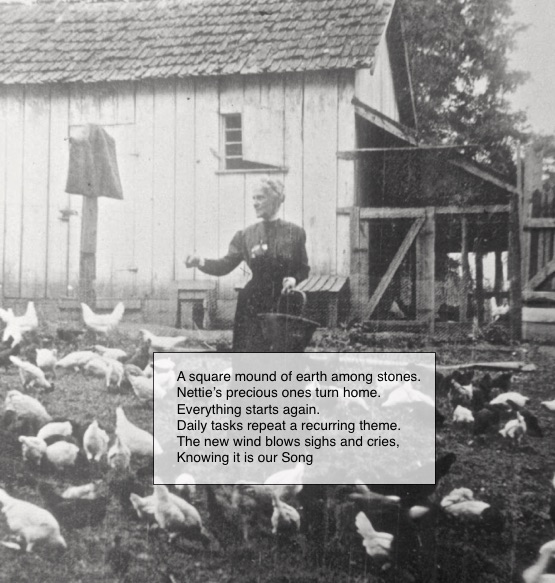 When the swallows homeward fly,
When the swallows homeward fly,
When the roses scatter’d lie,
When from neither hill nor dale,
Chants the silv’ry nightingale,
In these words my bleeding heart,
Would to thee its grief impart.
When I thus thy image lose,
Can I, oh! can I e’er know repose?
Can I, oh! can I e’er know repose?
When the white swan southward roves,
To seek at noon the orange groves,
When the red tints of the west,
Prove the sun is gone to rest,
In these words my bleeding heart,
Would to thee its grief impart.
When I thus thy image lose,
Can I, oh! can I e’er know repose?
Can I, oh! can I e’er know repose?
My poor heart, why do you cry,
Once also you in peace will lie!
All things on this earth must die;
Will then we meet, you and I?
My heart asks with boding pain
Will faith join us once again?
After today’s bitter parting pain.
Can I, oh! can I e’er know repose?
Can I, oh! can I e’er know repose?
References/Image Credits:
Chapter 27-28: April, 1865 – THE WAR ENDS. Dudley Pendleton Returns Home with a Servant; George Slow Finds a New Life in Philadelphia.
1. Third Battle of Petersburg.
2. The Boteler Collection – courtesy Ms. Leslie Keller.
3. Ibid.
Chapter 28: After The War and Tender Sprouts Appear, New Lives Unfold; Memories Blow Like a Breeze – Always.
continued from Chapterette 27:
4. Bushong, p. 188.
5. Kenamond, p. 122.
6. Arnold, Thomas Jackson. (1922). “The Lost Dispatch – A War Mystery.” Confederate Veteran, Volume 30, p. 317. (NOTE: Arnold was incorrect on one point. Douglas lived until 1903 and was serving as a courier during the Maryland Campaign for Gen. Jackson, and smoked cigars. Arnold says he was at the address by Rosser and wrote down his information on the following day).
7. Samuel Phillips Lee. wikipedia.org.
8. Pendleton-Boteler. Jefferson County Clerk Records, West Virginia. Marriage Records.
9. Year end letter The Goldsborough Collection.
10. Levin, pp. 190-193.
11. Julia Pendleton Allen GET ADD
12. Cooke, pp. 101-102.
13. Hamstead, Elsie. (2000). “One Small Village: Kearneysville 1842-1942.” Hagerstown, MD: Hagerstown Printing. Print.
15. The Boteler Collection
16. Ibid.
17, Ibid.
18. 1870 Census.
19. The Boteler Collection.
20. Shepherdstown Register, February 21, 1934.
21. Shepherdstown Register, December 21, 1933.
22. Shepherdstown Register, February 21, 1934.
23. Aglionby Farm Diary Vol. 1 p. 6.
24. U.S., Federal Census Mortality Schedules Index, 1850-1880.
25. The Goldsborough Collection, The Lee Society.
26. Ibid.
27. The Boteler Collection.
28. Shepherdstown Register, September, 1885.
29. Shepherdstown Register, August 26, 1886.
30. Thursday, November 22, 1888; Sun (Baltimore, MD) Volume: CIV Issue: 5 Page: 4. Local Matters
Date: Thursday, November 22, 1888. Paper: Sun (Baltimore, MD) Volume: CIV Issue: 5 Page: 4
This entire product and/or portions thereof are copyrighted by NewsBank and/or the American Antiquarian Society. 2004. genealogybank.com.
31. Bower Burns VFP ADD
32. Mary B. “Pink” Boteler Mason.
33. Shepherdstown Register, February 21, 1934.
34. July 14, 1896 – Fifty-year-old Edmund J. Lee findagrave ADD
35. Military Service Records National Archives and Records Administration (NARA).
36. Shepherdstown Register, October 13, 1898.
37. The Baltimore Sun, February 16, 1899.
The Late Colonel Morgan. a Popular Citizen of Jefferson County and a Gallant Soldier
Date: Thursday, February 16, 1899. Paper: Sun (Baltimore, MD) Volume: CXXIV Issue: 79 Page: 3.
This entire product and/or portions thereof are copyrighted by NewsBank and/or the American Antiquarian Society. 2004.Source: genealogybank.com
38. The Boteler Collection.
39. The Shepherdstown Register, May 8, 1903.
40. Levin, The Shepherdstown Good Newspaper, fall, 1985, p. 7.
41. Shepherdstown Register, October 22, 1914.
42. Helen Macomb Boteler Pendleton
Birth: May 4, 1840
Death: Oct. 20, 1914
43. Dandridge, p. 85.
44. The Cohongaroota, Shepherd College. 1915. pp. 97-98.
45. Netta Lee Goldsborough Burial.
Chapter 29: https://civilwarscholars.com/uncategorized/thy-will-be-done-chapter-29-endnotes-by-jim-surkamp/



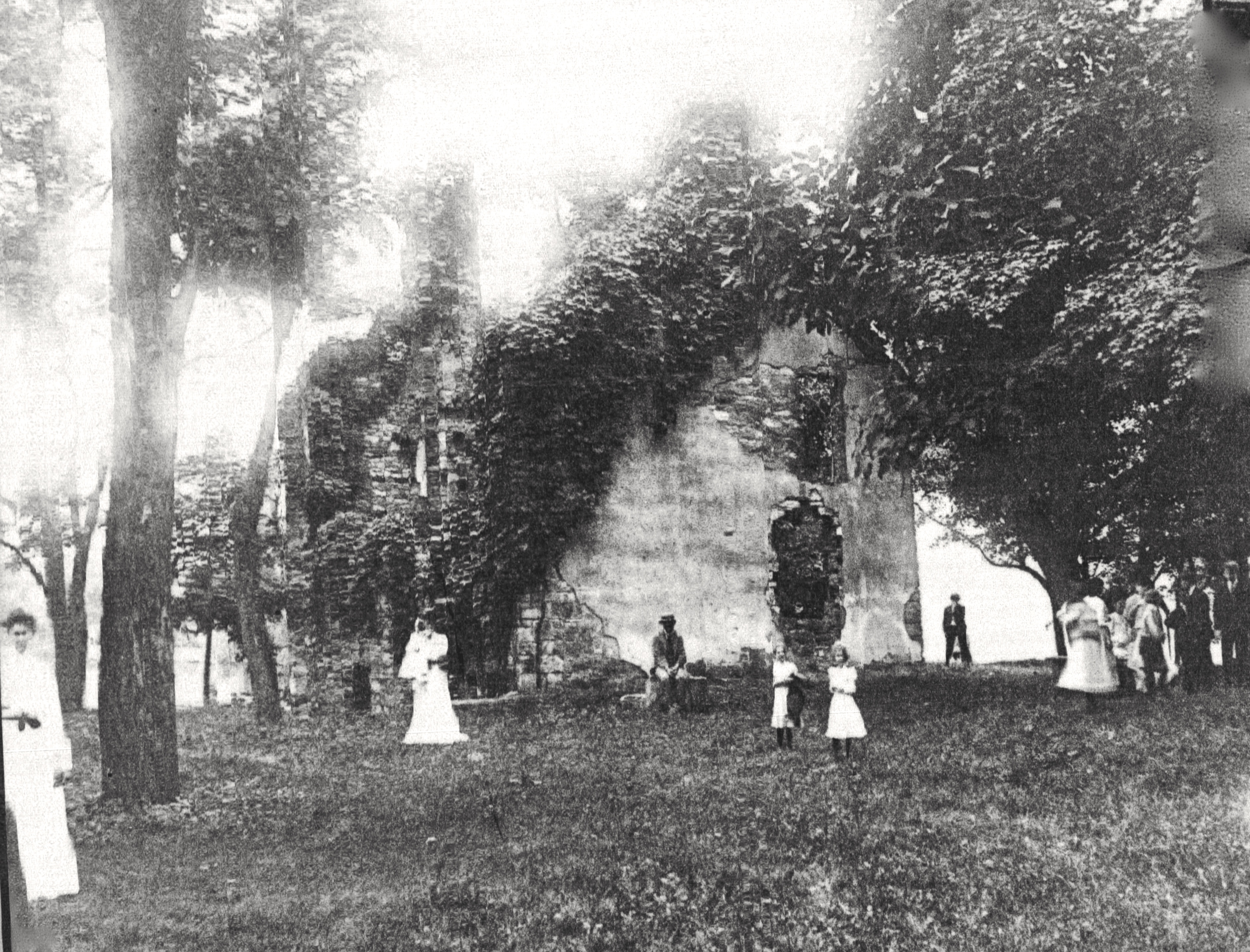
 When the swallows homeward fly,
When the swallows homeward fly,































